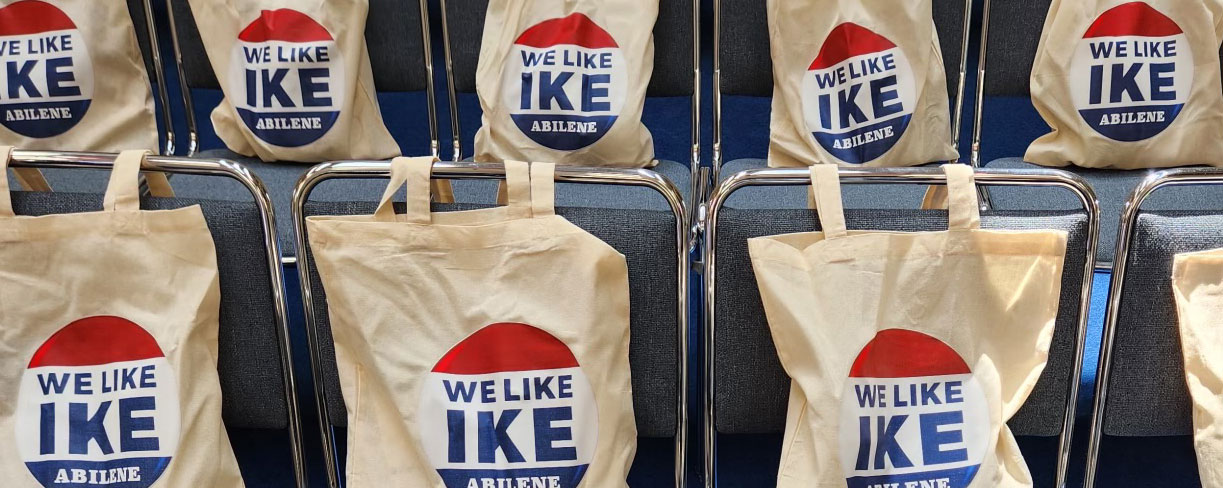
Regular Inspections Keep Dickinson County Bridges Safe
March 28, 2022
By KATHY HAGEMAN
Dickinson County Public Information coordinator
DICKINSON COUNTY, MARCH 26th, 2022: The Dickinson County Road and Bridge Department uses a strict inspection process to ensure the county’s 300 bridges are safe.
“Our bridges are inspected every other year and the ones that are more at risk are inspected every year," said Dickinson County Road and Bridge Supervisor Martin Tannahill. "None of our bridges are in danger of falling in."
When Tannahill talks about “our bridges,” he means structures located on township and county roads.
“We have nothing to do with interstate or state highway bridges,” Tannahill said.
Nationwide, the state of bridges and other infrastructure has long been a concern and in recent months, Congress passed the Infrastructure Investment and Jobs Act to help rebuild the nation’s roads, bridges and railways.
As if to emphasize the need, in January, the Fern Hollow Bridge in Pittsburg, Pa., collapsed., bringing renewed attention to the problems.
Locally, however, Dickinson County has taken an aggressive approach to ensure its bridges are safe, not only through a rigorous inspection process, but also with a planned bridge rebuilding program.
And it’s an agenda most county voters agree with. While the county has a regular road and bridge department budget, county residents in November 2020 voted to continue a one-half percent sales tax (originally instituted in 2014) to fund road and bridge projects. Those tax collections cannot be used for anything else.
The special sales tax will sunset in 2030.
Sixty percent of the sales tax collected goes toward paving projects, 30 percent is earmarked for bridges and 10 percent is for safety features, including striping and pavement marking.
High risk bridges
While all Dickinson County bridges are safe, some are more “at risk” than others because they are deemed fracture critical or scour critical. Those bridges are inspected yearly.
Bridge scour occurs when fast moving water removes sediment such as sand or gravel from the abutments or piers, causing severe erosion that could lead to possible structure failure if left unchecked.
The county has five bridges categorized as “fracture critical,” which means if one corner of the bridge fails the whole bridge fails.
“They were designed to push the weight down on the corners so when you drove on it you pushed on all four corners. If one corner on a fracture critical gives, the whole bridge is going to go,” Tannahill said. “Fracture critical may be considered high risk and they’re inspected every year.”
In comparison, if a haunch slab bridge was struck -- sustaining severe damage on one corner -- the bridge would remain standing.
“You would have to repair it, but it wouldn’t fall into the brink," Tannahill said.
Haunch slab bridges are one of the most common concrete bridges built today and the most common in Dickinson County.
“That’s what they’re building right now on Rain Road,” Tannahill said. “Even though it’s flat it’s got a little haunch in the middle.”
Haunch slab bridges can be built as long as necessary just by adding extra spans.
“You can make them whatever you need. You just need to add a pier every so often to hold it up,” Tannahill said.
The human element
Unfortunately, even the safest bridge can have an issue when drivers don’t exhibit common sense. Whether that’s due to driving dangerously and striking the corner of a bridge at a high speed -- or just as dangerous — exceeding a bridge's posted weight limit.
“The only one we ever had give-way happened when someone drove over a bridge with an excessive weight that it couldn’t handle,” Tannahill said.
In that incident the combined weight of a huge 4-wheel drive tractor and a fully loaded 1,400-bushel grain cart “snapped every plank and it was gone — the grain cart was sitting in the bottom of the channel,” Tannahill recalled.
Fun fact: A “bridge” is 20 feet or longer. Inspectors services are only used for bridges. County crews keep track of anything smaller using a rating system.
Starting in 2009, then Asst. Road and Bridge Department Supervisor Larry Young, now retired, drove down every road and wrote down every road, every structure, every culvert and the size of it and rated it a one through five, Tannahill said.
“When he got done we had a couple handfuls of ones and twos with one being bad,” Tannahill recalled. “That got us started with our plan to get so many done per year. We’re working on the threes now. The ones and twos have been handled.”
Surprise projects
Besides the inspectors and routine bridge crew examinations, the county also relies on residents who call in if something is amiss.
"The Rain Road bridge we're doing now was not a planned bridge project,” Tannahill explained. During the summer of 2021, Tannahill learned a hole had opened up on the bridge at 1510 Rain Road, south of Chapman. In response, Tannahill's crews temporarily
patched the bridge deck with a metal plate and the bridge moved to the top of the 2022 replacement list.
Although it sounds scary to hear that a hole opened up in a bridge, Tannahill said the structure still was safe. In fact, in some counties — especially those in less populated parts of Kansas — patched bridges often go years before enough money can be put aside to replace the bridge.
"In all reality, even though the hole was there and we threw that metal plate on it, that bridge would still pass inspection,” Tannahill said. "The problem is for the driving public, snow removal and everything else, I can’t just leave a steel plate out in the middle of a bridge."
What’s frustrating to Tannahill and his crew is they know exactly what caused the hole: Rock salt and chemicals used to pre-treat and/or melt snow and ice. It’s an unfortunate “Catch 22" that the process needed to keep roads safe also causes them to deteriorate.
While county crews do many of the smaller bridge projects, larger bridges are contracted out. Ebert Construction of Wamego is building the 1500 block of Rain Road, south of Chapman. That project is expected to finish up in April.
The cost to build the new Rain Road bridge is $727,000.
2022 bridge projects
Bids will be let in May for a bridge located at 510 800 Ave., and again in October for a bridge at 1145 First Road near Industry. Tannahill said the First Road Bridge will probably cost around $2 million.
“It’s going to be a big job. It’s going to cost us because we’re going to shorten the bridge by 80 feet, but to do that it’s going to take an immense amount of building a new road,” Tannahill said.
Other bridge projects planned in 2022 are located at 170 Trail Road, 1340 3400 Ave., 1356 400 Ave., 300 Lark Road, 1015 700 Ave., 1501 Oat Road and 1885 Daisy Road.
Also included is a fish passage bridge at 1468 Utah Road. For years, the county has received grant monies from the U.S. Fish and Wildlife Service to replace bridges located in the habitat of the Topeka Shiner minnow, which is on critical list of endangered species.
The Topeka Shiner lives in Lyon’s Creek in the southeast part of the county.
“We’ve done about 20 fish passage bridges,” Tannahill said. “The area encompasses over a quarter to one-third of the county. Why they live there and don’t live over by Manchester (in northern Dickinson County) I don’t know. But everything that tributes in or out of Lyon’s Creek is in a fish passage area.”
Tannahill said the Dickinson County road and bridge department usually can stay caught up on needed road and bridge projects.
“We are very blessed, with the sales tax we have and the amount of money in the budget,” Tannahill said. “Some places have got bridges where they can’t do anything but put up barricades until the money comes in.
“We can usually stay caught up, but the projects will never end.”




